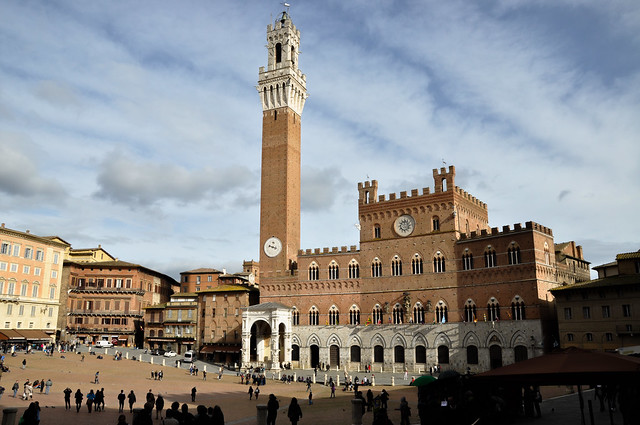
Para além do Palio, as famosas corridas de cavalo á volta desta praça, o maior divertimento desta praça é mesmo sentar no chão e apanhar sol. Ao principio custa a entender o conceito, não há relva, nem areia, nem rio, nem praia e todos se sentam no chão, alguns vão comendo qualquer coisa como se fosse um parque e não uma praça. Mas uma vez nela sentes necessidade de fazer o mesmo, tenho uma teoría de que não são sentam pelo sol mas para absorver a beleza desta praça medieval.
Besides the Palio, the famous horse races around this square, the most fun thing to do in this square is to sit on the floor and do some sunbathing. At first it takes time to understand the concept, there is no grass or sand, or river, or beach and they all sit on the floor, some will eat something like it's a park and not a square. But once in it you feel the need to do the same, I have a theory that they are not sitting for the sun but to absorb the beauty of this medieval square.
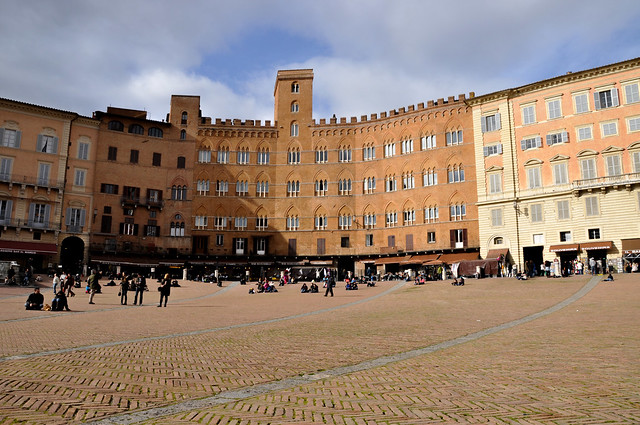


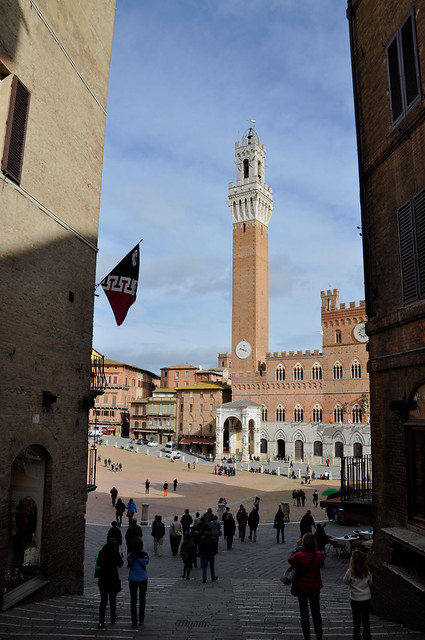
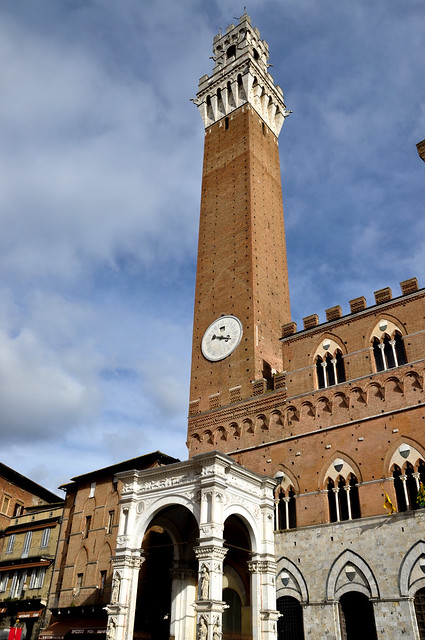
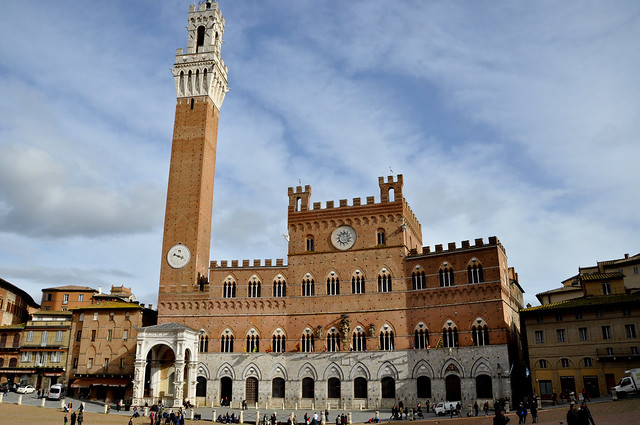
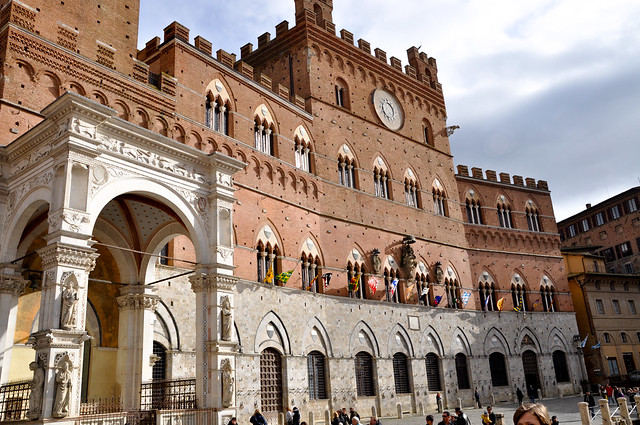

Durante as corridas do Il Palio, os jockeys representando as contradas (que são como bairros) lutam para ganhar dando três voltas á pista que se monta nesta praça. Imagino a emoção que não será vê-la porque na realidade não é assim tão grande e deve ser bastante rápida.
Nós tivémos a sorte de apanhar os alfieri, os porta-bandeira representando cada contrada que sairam pela rua rodopiando as bandeiras e tocando tambores. (Colocarei noutro post).
O edificio mais marcante da praça é o Palazzo Pubblico, cujo o nome me pareceu irónico porque nesse dia as visitas fechavam cedo o que significa que não é lá muito público. Nele está a Torre dei Mangia que com mais de 100 metros de altura é o melhor miradouro da cidade.
A outra atracção da praça é a Fonte de Gaia (ou Alegria) construída no século XV em mármore branco.
Há volta são vários os restaurantes e cafés com esplanada para quem quiser aproveitar a praça sem ter que se sentar no chão.
During the "Il Palio" race, the jockeys representing the "contradas" (which are like wards) fight to win making three laps around the track they built in the square. Imagine the excitement that is to see it because it really is not that big and it should be quite fast.
We were fortunate enough to catch the "alfieri", the flag bearer representing each "contrada2 who left the street twirling flags and playing drums. (I'll put in another post).
The most striking building of the square is the Palazzo Pubblico, whose name seemed ironic because on that day visits closed early which means it is not very public. In it is the Torre dei Mangia with more than 100 meters tall is the best viewpoint of the city.
The other attraction of the square is the Fountain of Gaia (or Joy) built in the fifteenth century white marble.
Around it there are several restaurants and cafes with outdoor seating for those who want to enjoy the square without having to sit on the floor.
We were fortunate enough to catch the "alfieri", the flag bearer representing each "contrada2 who left the street twirling flags and playing drums. (I'll put in another post).
The most striking building of the square is the Palazzo Pubblico, whose name seemed ironic because on that day visits closed early which means it is not very public. In it is the Torre dei Mangia with more than 100 meters tall is the best viewpoint of the city.
The other attraction of the square is the Fountain of Gaia (or Joy) built in the fifteenth century white marble.
Around it there are several restaurants and cafes with outdoor seating for those who want to enjoy the square without having to sit on the floor.






More posts:


Sem comentários:
Enviar um comentário